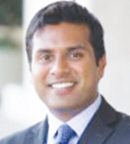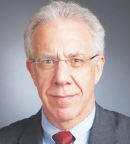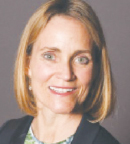The Oncology Care Model was instituted in 2016 by the Center for Medicare & Medicaid Innovation as a move away from the fee-for-service payment model and toward value-based care. It has sparked discussion ever since. How should quality be defined? Whose and what values should it reflect? How should it be measured and reported, and perhaps the knottiest question: how should it be incorporated into the day-to-day management of a clinical oncology practice? The discussion continued on all these fronts at the recent National Comprehensive Cancer Network® (NCCN®) policy summit on the quality of cancer care.

Ronald S. Walters, MD, MBA, MHA, MS
“A lot of effort has already gone toward measuring quality via various reporting programs in order to improve performance,” said NCCN Board Chair, Ronald S. Walters, MD, MBA, MHA, MS, who is Associate Head for the Institute for Cancer Care Innovation at The University of Texas MD Anderson Cancer Center, Houston. “However, there are still many opportunities to expand quality metrics in order to make them more relevant and meaningful for both providers and patients.”
The summit, entitled Defining, Measuring, and Applying Quality in an Evolving Health Policy Landscape and the Implications for Cancer Care, brought together experts from the provider, patient, payer, and policy communities to consider lessons learned so far and remaining challenges. Speakers and panelists explored the opportunities Dr. Walters referred to, focusing especially on two needs—measures that reflect patient goals and priorities and strategies for managing the related administrative issues.
Measuring What Matters
The Oncology Care Model now requires that practices report on quality measures related to hospitalization, hospice use, pain intensity and management, and depression screening and management. But quality measures must also address and reflect other patient priorities, said speakers and panelists throughout the day. “We need to measure what matters, not just what’s measurable,” said Kerin Adelson, MD, Chief Quality Officer for the Yale Cancer Center and Smilow Cancer Hospital, New Haven, Connecticut.

Kerin Adelson, MD

Alan Balch, PhD
What matters often includes the impact of treatment on aspects of daily life. That can include work disruption, the burden on family caregivers, the logistics of transportation, and, of vital importance for many if not most patients, financial toxicity. These are all issues that are “missing from data sets now,” said Alan Balch, PhD, who is Chief Executive Officer of the National Patient Advocate Foundation. They are “aspects of the patient’s journey that are important and should be measured.”
“Robust shared decision-making,” he added in an interview, “and goal-concordant care planning that incorporates what’s important to the patient are time-consuming activities that are not adequately accounted for in the current [Oncology Care Model] payment structure.”
Many hope that will change. “In order to fulfill the goals of the Institute of Medicine (IOM) care plan model included in the [Oncology Care Model],” he said, “[the Center for Medicare & Medicaid Innovation] should provide additional resources to deliver those elements through the robust and systematic application of shared decision-making and care planning. Those should be the explicit means by which to deliver the various components of the IOM care plan.”

Shantanu Agrawal, MD, MPhil
Various efforts are now underway to improve quality measures. The Core Quality Measure Collaboration, for instance, housed at the National Quality Forum, provides an endorsement of health-related quality measures. Cancer care quality measures make up about 5% of its portfolio, said National Quality Forum Chief Executive Officer Shantanu Agrawal, MD, MPhil, who spoke at the meeting.
The National Quality Forum’s “Measure Incubator,” which nurtures development of needed measures, is now looking at gaps in cancer care measures.
Reporting Quality Measures
Inherent in the need to measure quality of care is the need to gather and report the data—a requirement that poses its own set of challenges. “Measurements should be easily attainable without adding administrative burdens,” said Lawrence N. Shulman, MD, FACP, FASCO, Deputy Director for Clinical Services at the University of Pennsylvania’s Abramson Cancer Center, Philadelphia. “Ideally, this should be done by extracting them from electronic health records or cancer registries, rather than by manual chart abstraction. And they must be repeatedly measured,” he added, “with an approach geared toward continuous process improvement.”
Yet even with the availability of electronic health records, reporting remains a logistical and time-consuming challenge for many practices. “Reporting is hard,” said Diana Verrilli, MS, Senior Vice President for Strategy and Practice Solutions at McKesson Specialty Health, which supports the US Oncology Network of community cancer centers. “Practices must record and report measures for every visit of each patient and in multiple categories, including psychosocial screening, pain and depression management, financial counseling, treatment plans, chemotherapy education, advance care planning, and more,” she said. “Electronic health records must support reporting.”

Lawrence N. Shulman, MD, FACP, FASCO

Diana Verrilli, MS
Maintaining electronic health records, however, is time-consuming and places a significant burden on physicians. A recent investigation by Kaiser Health News and Fortune Magazine concluded that “many doctors say they spend half their day or more clicking pulldown menus and typing rather than interacting with patients. An emergency room doctor can be saddled with making up to 4,000 mouse clicks per shift.”1
Clinical Support Frameworks
One approach practices are taking to reduce administrative burdens is to create a support framework for oncologists. That means “giving the oncologist the tools to do the right thing,” said Dr. Adelson. “You have to create an infrastructure to make it easier.”
One of the tools Yale designed specifically to support shared decision-making, is a tablet computer questionnaire on depression and distress—an infrastructure that can be used in the future to collect symptom-related, patient-reported outcomes. Patients respond to the questionnaires while in the waiting room, helping to prepare both themselves and the oncologist for a discussion of their emotional well-being.
Communication workshops for oncologists on how to talk with patients are also part of the support framework being developed at Yale. Other tools in its program are designed to track health-care utilization, particularly that at the end of life. A dashboard focused on end-of-life care tells providers which patients received oncolytic therapy, visited the intensive care unit or emergency room, or were hospitalized in the last month of life—metrics that have been shown to drive patient and caregiver distress as well as increased costs.
“The goal is to stimulate thinking about whether care could have been delivered differently,” Dr. Adelson said. Yale also has charts to show when individual physicians are over or under target costs and which drugs they prescribe most often. More support for each oncologist comes from regular reviews and consultations on the charts with program staff.
Participation in the Oncology Care Model has allowed Yale to fund vital clinical infrastructure, such as an oncology-specific urgent care center and care coordination program. These have led to reductions in the use of acute care (hospitalizations, emergency department visits) and post-acute care (rehabilitation, palliative services), as well as to savings in the program when costs were less than the Medicare-specified targets.
Despite this, the absolute cost of care has continued to rise. “While we have reduced the incidence of acute care use and kept the cost of each of these elements stable,” she said, “the prices of pharmaceuticals have continued to rise, now accounting for 60% of the total cost of care. Reducing acute care utilization alone is not enough to curtail rising costs. Future cost-containment efforts must target the rising cost of pharmaceuticals.”
DISCLOSURE: Dr. Walters, Adelson, Balch, Agrawal, Shulman, and Verrilli reported no conflicts of interest.
REFERENCE
1. Schulte F, Fry E: Death by a thousand clicks. Kaiser Health News and Fortune Magazine. March 18, 2019.

